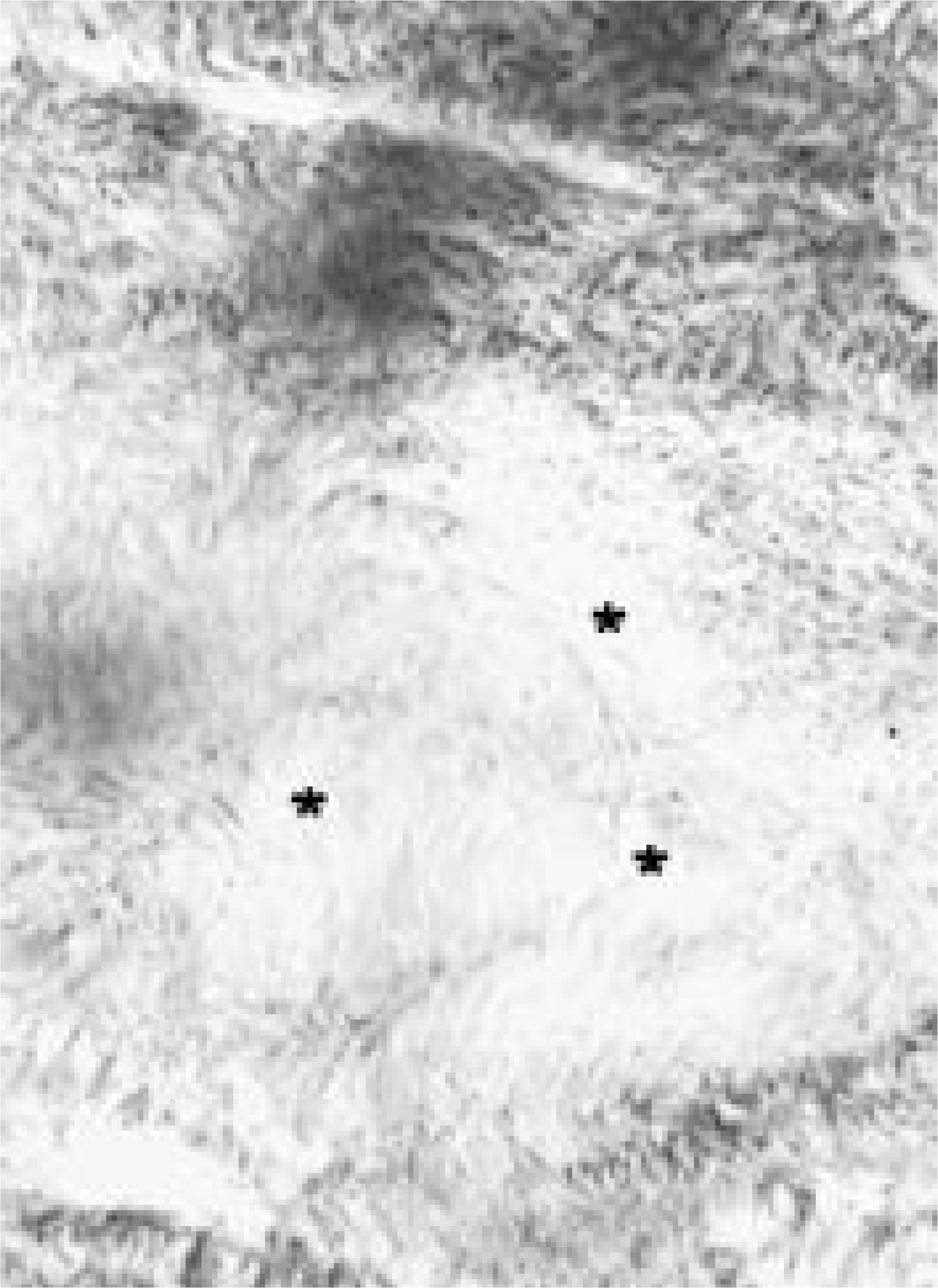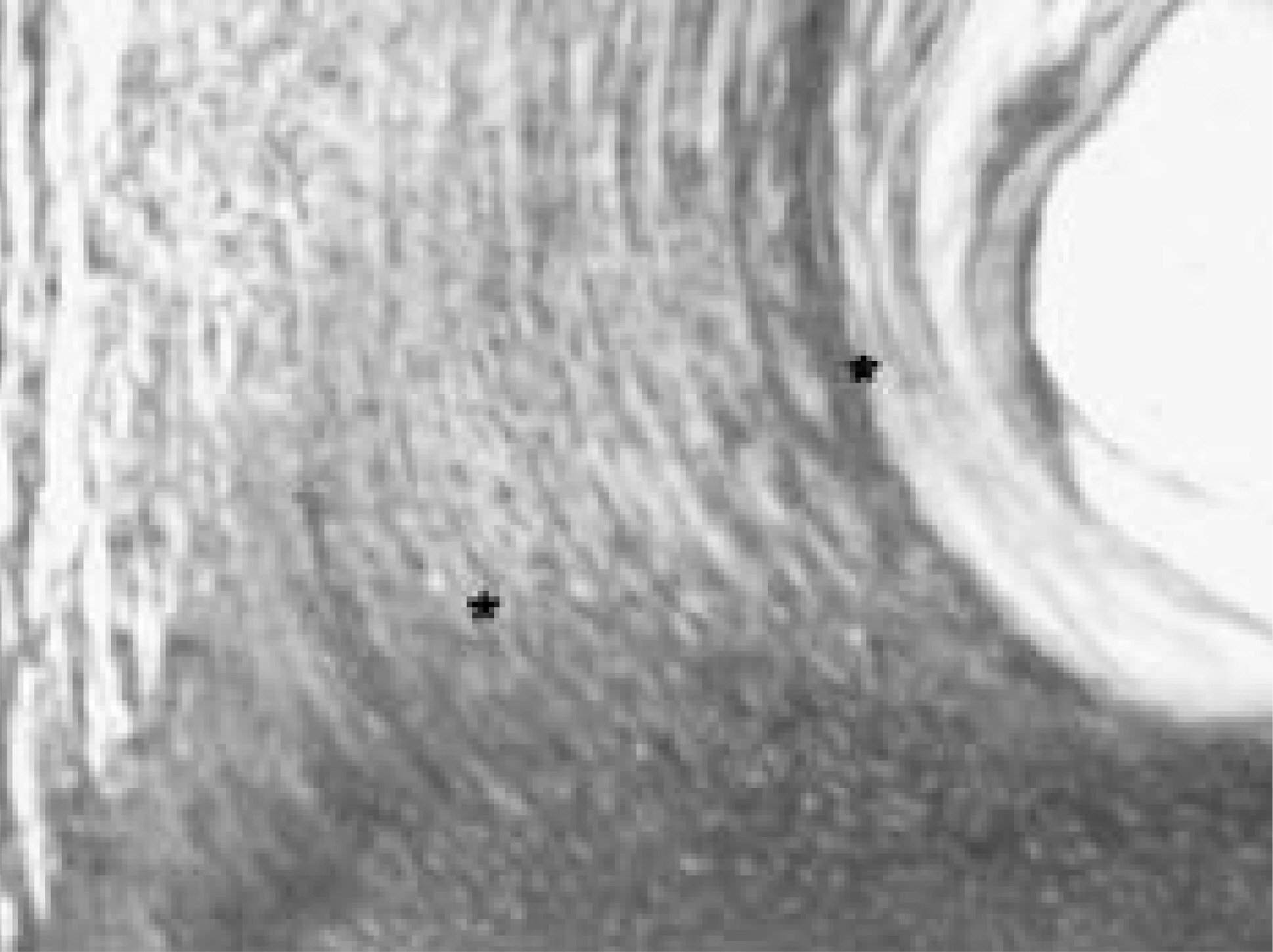J Korean Soc Spine Surg.
2002 Sep;9(3):172-177. 10.4184/jkss.2002.9.3.172.
Immuno-expression of Type IV Collagen in the Intervertebral Disc
- Affiliations
-
- 1Department of Orthopedic Surgery, Ajou University School of Medicine, Suwon, Korea. chjeon@ajou.ac.kr
- 2Department of Orthopedic Surgery, Konyang University College of Medicine, Taejon, Korea.
- KMID: 2003221
- DOI: http://doi.org/10.4184/jkss.2002.9.3.172
Abstract
-
STUDY DESIGN: In vitro studies using human intervertebral disc for the localization of the type IV collagen.
OBJECTIVE
1) To study the distribution pattern and immunoexpression of type 4 collagen in the intervertebral disc, 2) To study the function of type IV collagen in the intervertebral disc. SUMMARY OF BACK GROUND: The correlations of degeneration changes and collagens in the dics have not been determined. The reports for type IV collagen were few. So far, the histologic analysis for the expression of type IV collagen in the intervertebral disc has not been done. There was no report to study the function of the type IV collagen in the intervertebral disc.
METHODS
Fifty-four disc blocks obtained during anterior interbody fusion of the lumbar spine were used to observe the expression pattern of the type IV collagen with immunochemical stain. For the observation of the myxomatous degeneration in the intervertebral disc, the alcian blue stain with periodic acid-schilff was done. For the control group, 22 neonate intervertebral disc blocks were obtained at autopsy.
RESULTS
The immunoreactions for type IV collagen were associated blood vessels in the anulus fibrosus in the disc. There was no statistical significant difference of the type IV collagen expression between the control and disease groups. Myxomatous degenerations were observed as the irregular form in the degenerative intervertebral disc.
CONCLUSION
The immunoreactions for the type IV collagen were observed in the intervertebral discs and associated with the formation of the blood vessels, especially in anulus fibrosus.
Keyword
MeSH Terms
Figure
Reference
-
1). Ahmed MU, Thorepe SR, Baynes JW. Identification of N (carboxymethyl)-lysine as a degradation product of fructose lysine in glycated protein. J Biol Chem. 261:4889–4894. 1986.2). Beard HK, Ryvar R, Brown R, Muir H. Immunochemical localization of collagen types and proteoglycan in pig intervertebral discs. Immunology. 41:491–501. 1980.3). Beard HK, Roberts S, O’ Brien JP. Immunofluores -cent staining for collagen and proteoglycan in normal and scoliotic intervertebral discs. J Bone Joint Surg. 63B:529–534. 1981.4). Berkovitz B. Collagen crimping in the intra-articular disc and articular surfaces of the human temporo -mandibular joint. Arch Oral Biol. 45:749–756. 2000.5). Brickley-Parsons D, Glimcher MJ. Is the chemistry of collagen in intervertebral discs an expression of Wolff's law? A study of the human lumbar spine. Spine. 9:148–163. 1984.
Article6). Eyre DR. Collagens of the disc. Chosh P, editor. ed.The Biology of the Intervertebral Disc. Boca Raton, Florida: CRC Press;p. 171–188. 1988.
Article7). Ghosh P, Bushelll GR, Taylor TFK, Akeson WH. Collagens, elastins and noncollagenous protein of the intervertebral disc. Clin Orthop. 129:124–132. 1977.8). Herbert CM, Lindberg KA, Jayson MIV, et al. Changes in the collagen of human intervertebral discs during ageing and degenerative disc disease. J Mol Med. 1:79–91. 1975.9). Kaapa E, Holm S, Han X, Takala T, Kovanen V, Vanharanta H. Collagens in the injured porcine intervertebral disc. J Orthop Res. 12:93–102. 1994.10). Nerlich AG, Boos N, Wiest I, Aebi M. Immunolo -calization of major interstitial collagen types in human lumbar intervertebral discs of various ages. Vichows Archv. 432(1):67–76. 1998.
- Full Text Links
- Actions
-
Cited
- CITED
-
- Close
- Share
- Similar articles
-
- Adequate Serial Monolayer Passage Number of Human Intervertebral Disc Cells for Cell Therapy: Growth and Phenotype of Cells
- Different Expression of Extracellular Matrix Genes: Primary vs. Recurrent Disc Herniation
- Biochemical Factors of Intervertebral Disc Degeneration: Implications for Disc Regeneration
- Type IV Collagen mRNA Expression in Human Membranous Nephropathy
- Spontaneous Total Resolution of Severe Lumbar Disc Herniation





